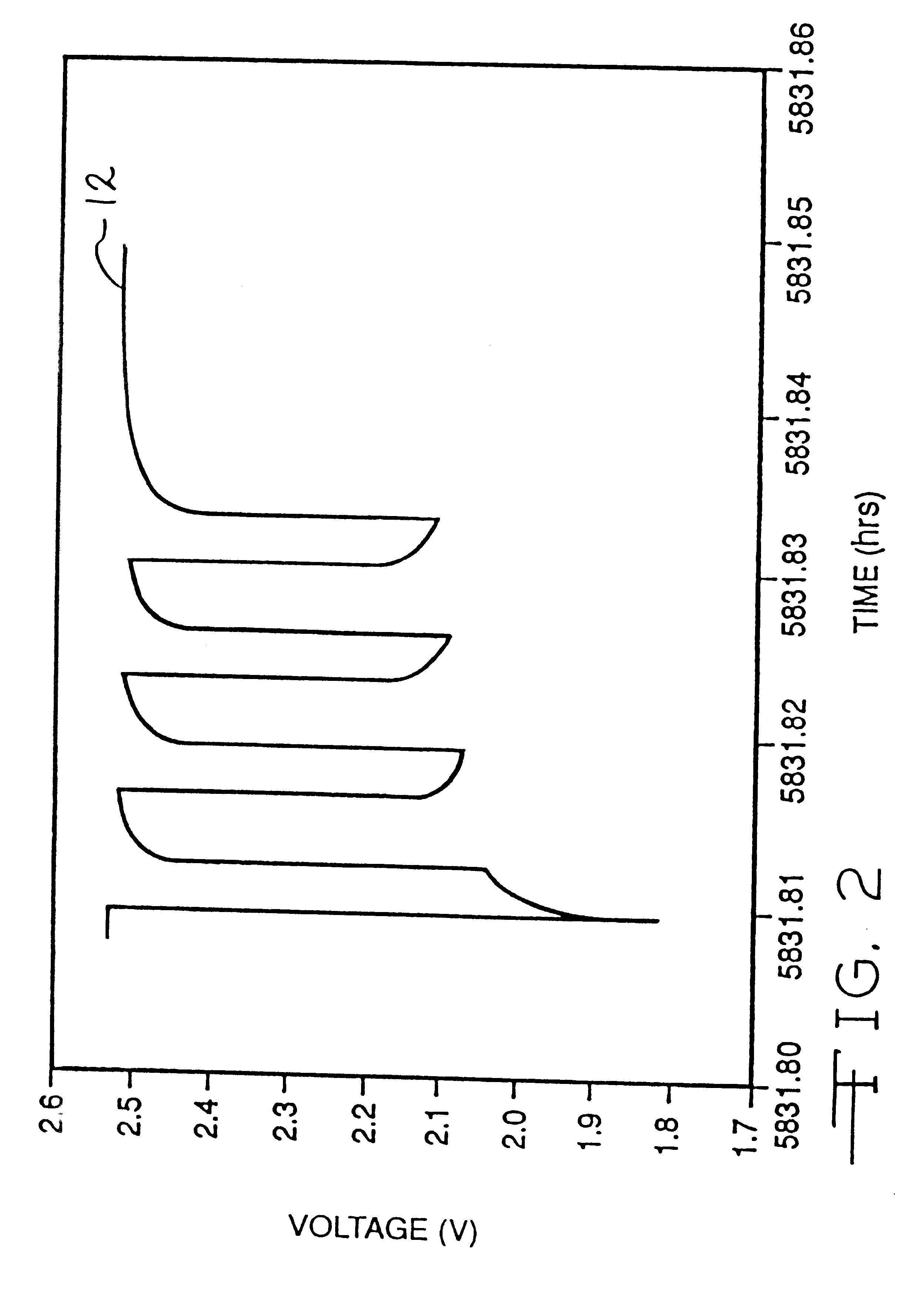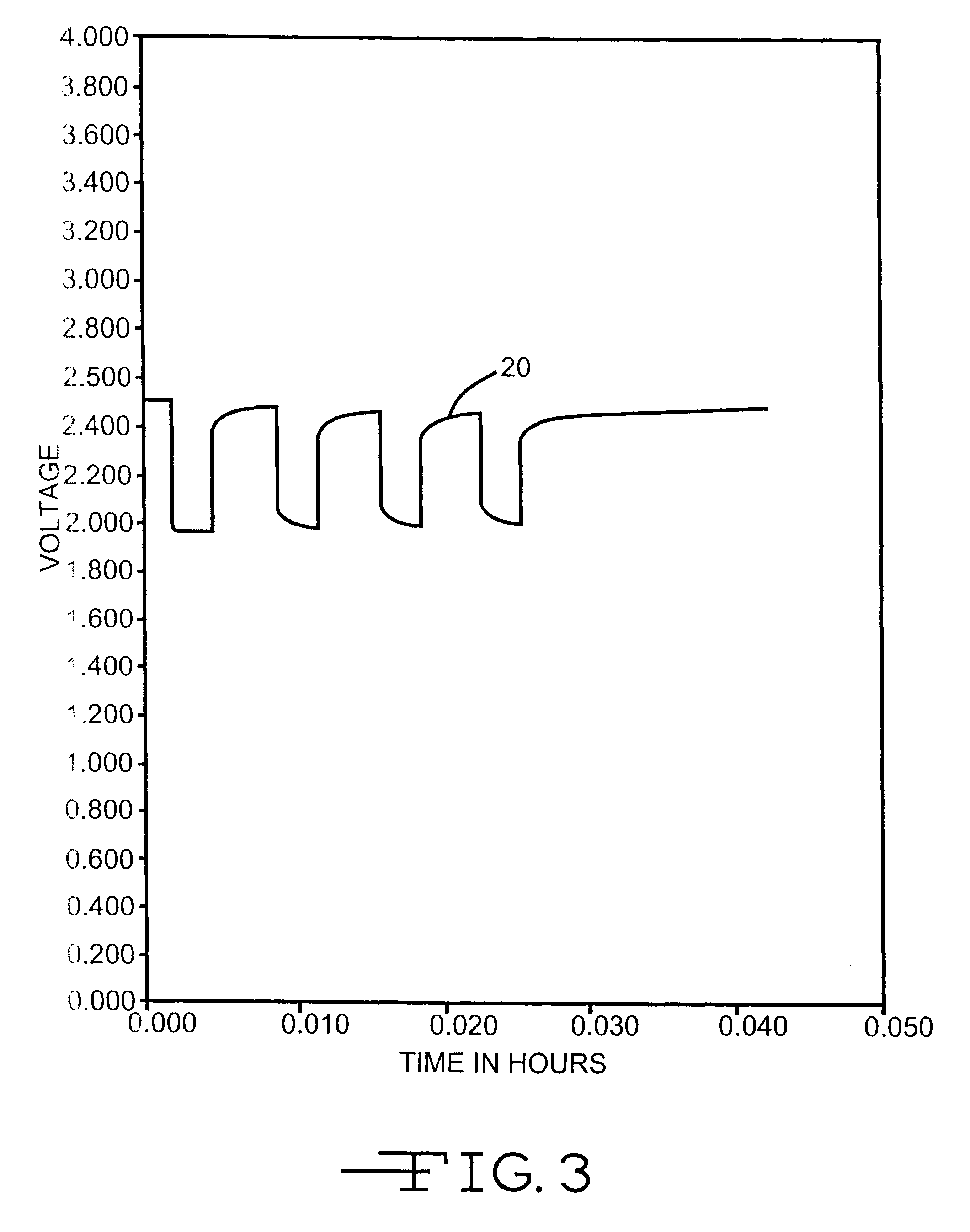Alkali metal electrochemical cell activated with a nonaqueous electrolyte having a sulfate additive
a nonaqueous electrolyte and electrochemical cell technology, applied in the direction of cell components, non-aqueous electrolyte cells, cell maintainance/servicing of primary cells, etc., can solve the problem of unavoidable surface film formation of alkali metal, reduced discharge voltage, and difficulty in achieving second requiremen
- Summary
- Abstract
- Description
- Claims
- Application Information
AI Technical Summary
Benefits of technology
Problems solved by technology
Method used
Image
Examples
Embodiment Construction
Lithium anode material was pressed on nickel current collector screen and silver vanadium oxide cathode material was pressed on titanium current collector screen. A prismatic cell stack assembly configuration with two layers of microporous membrane propylene separator sandwiched between the anode and cathode was prepared. The electrode assembly was then hermetically sealed in a stainless steel casing in a case-negative configuration. Three cells were activated with the standard electrolyte consisting of 1.0M LiAsF.sub.6 dissolved in a 50:50, by volume, mixture of PC and DME without an organic sulfate additive (Group 1). Three cells were activated with the same electrolyte used to activate the Group 1 cells and further containing 0.01M of bis(trimethylsilyl) sulfate (BTMSS), as set forth in Table 1.
A constant resistive load of 3.57 k.OMEGA. was applied to all of the cells for 21 hours during an initial pre-discharge burn-in period. The pre-discharge burn-in period depleted the cells ...
PUM
 Login to View More
Login to View More Abstract
Description
Claims
Application Information
 Login to View More
Login to View More - R&D
- Intellectual Property
- Life Sciences
- Materials
- Tech Scout
- Unparalleled Data Quality
- Higher Quality Content
- 60% Fewer Hallucinations
Browse by: Latest US Patents, China's latest patents, Technical Efficacy Thesaurus, Application Domain, Technology Topic, Popular Technical Reports.
© 2025 PatSnap. All rights reserved.Legal|Privacy policy|Modern Slavery Act Transparency Statement|Sitemap|About US| Contact US: help@patsnap.com



